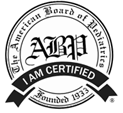With finals this next week, I thought we’d talk about test anxiety. Test anxiety is a common source of stress for both students and parents. Despite your best efforts to help your child study more effectively, instructing your child how and what to study may actually increase their anxiety as your suggestions are likely to be based on your own study style preferences. Instead of offering your advice or opinion, we suggest you try some of the following:
Breathe. Help your child relax by practicing diaphragmatic breathing. Diaphragmatic breathing increases oxygen in the bloodstream. It is a way to interrupt the body’s response to stress and promote a relaxation response instead. This strategy can be used before, after and DURING test taking!
Relax. When you are feeling anxious or stressed, one of the ways your body responds is with muscle tension. Progressive Muscle Relaxation (PMR) is a strategy that helps relieve that tension by completing a series of exercises in which you tense your muscles as you breathe in and relax them as you breathe out. PMR can also be used, anytime and anywhere.
Promote Organization. Before your child begins to study, ensure that he/she has all of the necessary materials (i.e., pens, highlighters, note cards, books). Help your child group his/her study information into categories or test subjects. Organizing information before your child begins to study will allow him/her to spend more time with his/her nose in the books and less time searching for missing papers.
Break It Down. Work backward and help your child identify smaller content areas, within a test subject that he/she can focus on, one at a time. This will help your child feel less overwhelmed and make studying more manageable.
Encourage Time Management. Once your child has organized and identified the test content areas, help your child create a study schedule. Make sure to start studying early. Information is more easily remembered when it is studied for shorter periods of time over a longer time period rather than spending hours cramming for 1 or 2 days. Also, make sure to schedule in study breaks.
State-Dependent Learning. As much as possible, the environment in which your child studies should mimic the test environment. Help your child find a quiet place to study in your home or at the library. Have him/her sit at a desk or table instead of lying on his/her bed. Limit distractions including background noise or music. Use a timer and offer periodic breaks if your child’s testing environment will be doing the same.
Remember the Bigger Picture. Children who experience test anxiety may easily forget how much the test grade counts towards a final grade. Help your child put the test into perspective by highlighting their successes in other areas and how those achievements are linked to future goals. For tests which are used to help determine a child’s future academic placement (e.g., SATs, ACTs, AP exams, etc.), make a list of ALL the other criteria (i.e., letters of recommendation, grades, extracurricular activities) that are also incorporated into applications. The longer the list, the easier it will be for your child to see his/her test score as one factor, out of many, that are used in this decision making process.
It is very common for students to become nervous or anxious when they must take quizzes and tests. By developing effective study skills and engaging in routine practice of relaxation exercises, many child are able conquer test-anxiety.
-Sarah Caudle, PA-C




